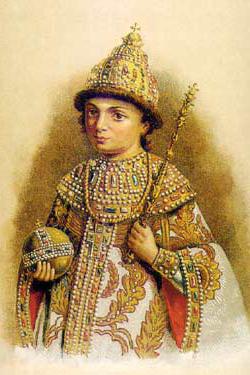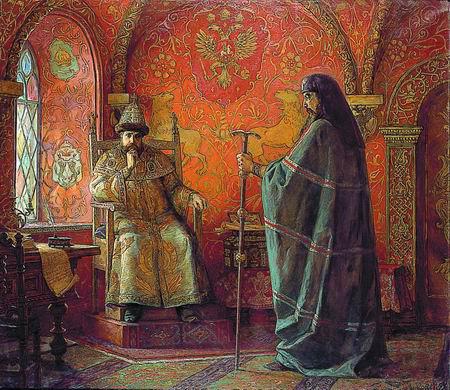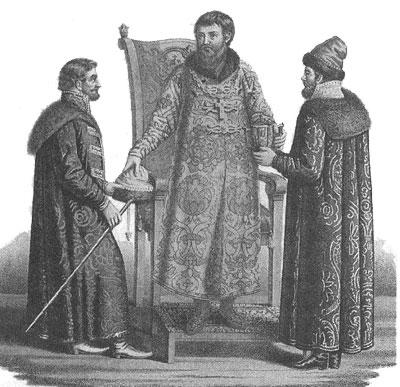On March 19, 1629, the second tsar of the new Russian monarch of the dynasty was born - Alexei Mikhailovich Romanov. The historical portrait of this ruler draws the image of a rather intelligent, skillful and tolerant monarch.
Youth of Alexei Mikhailovich Romanov

The biography of Alexei Mikhailovich Romanov is very interesting. His mother was E.L. Streshneva - the daughter of noble small-local boyars. Until the age of five, Alex was under the supervision of numerous mothers and nannies. Boyarin B.I. Morozov became the mentor of the young tsar. By the age of six, the king possessed a letter, the first books he read were: Chapel, Acts of the Apostles, Psalter. Alexey was so fond of reading that by the age of 12 he had his own children's library. Among his favorite books are Cosmography, Lexicon and Grammar, published in the Principality of Lithuania. Among his toys were children's armor of German masters, musical instruments, printed sheets (pictures). Alexei Mikhailovich also loved outdoor activities, since childhood he was fond of falconry, and in adulthood he even wrote a treatise on falconry. The biography of Alexei Mikhailovich Romanov indicates the enormous influence that the guardian had on his ward. By the age of fourteen, young Alexei Mikhailovich was introduced to the people, and at sixteen, after the death of his father and mother, ascended the throne.
The first years of the reign
The reign of Alexei Mikhailovich Romanov began in 1645. The ruler’s youth and inexperience at first was so great that all the important and painful issues of government were concentrated in the hands of B.I. Morozov. But the excellent education and talent of the ruler made themselves felt, and soon Alexey Mikhailovich Romanov himself began to take government decisions. The historical portrait of his reign of those years describes all the difficulties and contradictions of the domestic and foreign policy of Russia. The active involvement of foreign advisers in governing the country gave rise to reforms.
At this time, the character of the king is manifested. An educated, benevolent and calm person - this is how Alexey Mikhailovich Romanov looked in the eyes of his contemporaries. The tsar received the nickname "Silent" quite deservedly. But if necessary, he could show will, determination, and sometimes even cruelty.
Cathedral laying
The reforms of Aleksei Mikhailovich Romanov laid the foundation for the creation of the Council Code - the first set of laws of the Russian state. Before that, refereeing in Russia was guided by various decrees, extracts and orders, often contradicting themselves. The Salt Riot prompted the adoption of the king’s code , caused by new salt duties. The instigators suggested that the sovereign put in order the rules of salt trading and convene a Zemsky assembly. At that moment, the king was forced to make concessions, but after the adoption of the Code, the Zemsky Sobor lost its authority and was soon dissolved.
The king’s marriage
Soon after ascending the throne, the king was found a bride. She was Maria Ilyinichna Miloslavskaya - a girl from an old and noble noble family. At that time, the kings did not look for brides abroad, but chose wives from successful boyar houses. Several boyar clans fought for the opportunity to intermarry with the royal family. In the Assumption Cathedral, in prayer, the king saw the girl Mary of the Miloslavsky family. It is unlikely that this meeting was accidental.
Be that as it may, this marriage was successful and lasting. Until her death, the king revered his queen, was an exemplary family man and made thirteen children with her, three of them later were the rulers of the country.
Church schism
The influence of the church at the beginning of the reign of Alexei Mikhailovich was so great that Patriarch Nikon was granted the title of "great sovereign." So, the king recognized the equality of power between himself and the ruler of the church. But this aroused the discontent of the boyars, since Nikon demanded of them complete obedience and absolute non-interference in church affairs. But, as time has shown, such a comparison had its significant drawbacks.

Nikon considered that he had the right to tell the tsar how to complete state affairs. Influence on the king of the aristocracy and the boyars decreased. The sources of such influence should be sought in the upbringing that Alexey Mikhailovich Romanov received. The historical portrait and notes of contemporaries show us the image of a very God-fearing, religious person. There was only one way to reduce Nikon’s influence. At the beginning of 1658, the protopop of the Kazan Cathedral turned to the tsar with a direct question: “How long do you endure such an enemy of God?” And for the tsar there were no more humiliating reproaches than those that infringed on his tsarist power and doubted the authority of the autocracy. Confrontation was inevitable and eventually led to a split. The formal reason was the insult of Nikon by the boyars, after which he loudly pulled away from the dignity of the patriarch and went to the monastery. In 1666, the
Ecumenical Council deposed Nikon and officially deprived him of his rank. Since then, the reign of Alexei Mikhailovich Romanov has become truly autocratic, and he extends his authority even to the Church.
Politics of Alexei Mikhailovich Romanov
Foreign relations were of particular interest to the king. The request of the Cossack centurion Khmelnitsky to stop the Polish intervention was heard by the autocrat. The Zemsky Sobor of 1653 accepted the citizenship of the Ukrainian Cossacks and promised them military support. In May 1654, Russian troops marched and occupied Smolensk. By order of the tsar, in the spring of 1654 hostilities were continued, and the cities of Kovno, Brodno and Vilna became Russian.

The Swedish war was launched, which ended in defeat. The troubles in Ukraine, which began shortly after the death of Khmelnitsky, demanded the resumption of hostilities with Poland. On January 8, 1654, at the Pereyaslavskaya Rada, the entry of Ukraine into Russia was finally recorded. Much later, in 1667, Poland agreed to new borders, and the agreement on Ukraine’s accession to Russia began to be recognized at the international level. Successfully conducted protection of the southern borders of the state, such cities as Nerchinsk, Irkutsk, Seleginsk were erected.
Rebellious age
Many decisions related to the development of Siberia and the expansion of the country were personally made by Alexei Mikhailovich Romanov. The historical portrait of the autocrat of all Russia would not be complete without an awareness of the most severe internal contradictions and tensions that he had to face during the reign. It is no coincidence that the 17th century will later be called “Rebel” because of the constant uprisings that revolted the state. Especially worth noting is the revolt of Stepan Razin, the suppression of which had to spend a lot of time and effort.
The king's economic policy encouraged the creation of manufactories and the expansion of foreign trade. The tsar patronized Russian trade, protecting his domestic market from foreign goods. There were miscalculations in economic policy. The reckless decision to equate the value of copper money with silver caused popular murmurs and led to the devaluation of the ruble.
The last years of the reign of Alexei Mikhailovich
After the death of his beloved wife, the king married a second time. His chosen one was N.K. Naryshkin, who gave him three children, including the future Emperor Peter 1.
The king paid great attention to education and instructed the Ambassadors decree to translate foreign literature and various scientific works into Russian. Among the close associates of the tsar there were many who read the books of ancient writers, had their own libraries and were fluent in foreign languages. The second wife of the king was fond of the theater, and for her, at the palace, her own small theater was specially created. Alexey Mikhailovich died at the age of 47.
The results of the reign of Alexei Mikhailovich Romanov
The results of the reign of this king can be described as follows:
- The autocracy was strengthened - the king’s power was no longer limited to the Church.
- There was a complete enslavement of the peasants.
- There was a Council Code, which became the beginning of judicial reforms in Russia.
- As a result of the reign of this king, the border of the Russian state expanded - Ukraine was annexed, and the development of Siberia began.